
Analiza krize francuskog franka
Extract from the issue 1/1938 of the journal Znanost i život
More...We kindly inform you that, as long as the subject affiliation of our 300.000+ articles is in progress, you might get unsufficient or no results on your third level or second level search. In this case, please broaden your search criteria.

Extract from the issue 1/1938 of the journal Znanost i život
More...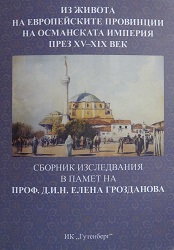
This study, based on the ground of unpublished Ottoman tax registers (tapu tahrir defterleri), analyses the "population-area" relationship in the Sakar Mountain and the adjacent area in the 15th-16th century. After detailed selection and translation of the Ottoman tax registers and analysis of the information in terms of settlements, as identified in the registers, the borders of the kaza of Edirne have been established as well as the changes which occurred in that territory; the extent and methods of occupying this administrative area and the ethno-religious structure of the population, within the studies region, have been specified. It has been found that the East, West and North borders of the region of Edirne did not undergo significant changes in time. Only the South border was changed over the years, including towns and villages, adjacent to the kaza of Dimetoka. A typical feature of the settlement network, withing that region, was its instability at the end of 15th and the first half of the 16th century. The small weak settlements prevailed in it - probably still newly populated areas, founded when liberated slaves or colonized population settled the area or they were just old settlements in decline. Int the second half of the 16th century the settlement network became stable and strong and increased its density. Within the period 1485-1570 most densely populated was the area with and altitude of up to 250 m. Together with the process of settling the lowlands another process was taking place - settling of the foothill and the mountain areas of the region. The towns and villages, located in the investigated region, were occupied by Muslims and non-Muslims, as the total number of the households of both religious communities gradually increased in the years.
More...
The debate of the identification and definition of the askeri cifliks lies at the center of the Ottoman economic history. Their existence arises important questions related to the balance in the Ottoman classical economic and social system based on the state land property, the legitimacy of the political power of the Ottoman ruling class and the revenue collection of the agrarian surplus. A typical case of land usurpation and private control over the appropriation of the agrarian surplus can be investigated in the detail thanks to a wealth of historical data consisting of tax registers (tapu-tahrir defters), inventories of vakf's revenues and complaints against the ciflik-owner dated from 16th to the beginning of 18th century. The foundation and practice of administrator (mutevelli) of the Sofu Mehmed Pasha's and Mustafa Aga's vakfs (charitable donations), in the beginning of the 18th century demonstrates the genesis of such farms by occupation of abandoned lands. In addition, the investigation of the genesis and character of Veli Efendi's ciflik shows different ways of violation of the land law by the ciflik-owner as a result of his attempts at accumulating land, power and riches. The information included in the documents concerning the case of the ciflik presents the importance of political and economic factors such as the impact of the military campaigns on the population and the possibility of usurpation of abandoned lands as a result of the flight of the villagers for creating big askeri cifliks. The administration and control over the vakf's revenues and properties as part of the ciflik-holder's official duties are also of great significance for making high profits through concealing the ciflik's population and workers, misappropriation of arable lands and tax evasion. In other words the investigation of the case of the Veli Efendi's ciflik sheds light on the basic debatable questions in the Ottoman historiography related to the genesis and development of the askeri cifliks in the Ottoman Empire and some violations of the law and taxation by their holder, especially during 17th-18th centuries.
More...
The paper aims to add some elements to the portrait of hired workers (ter oglani, irgat) or share croppers (ortakci) in the askeri cifliks. The inheritance documents of several men and one woman who had died in the cifliks present a rare opportunity to examine aspects of the life of this category of people. The inheritance inventories (terke/ muhalleft defters) of these people were registered in the kadi court registers of the towns of Sofia, Vidin and Ruscuk (mod. Rousse). The first part of the paper analyses the main elements of the contractual relations between ciflik owners and the people they had hired and taxation of the workers. The second part of the paper examines some aspects of the portrait of these workers, based on a structural analysis of inheritance inventories of their representatives, who were either peasants or town dwellers.
More...
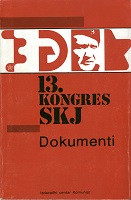
U borbi za razvijanje socijalističkih samoupravnih društvenih odnosa u procesu stvaranja društva slobodnog rada, ukidanja ostataka klasnog društva i svih oblika potčinjavanja i otuđenosti čovjeka, SKJ se, u razdoblju između 12. i 13. kongresa, suočio u mnogo čemu s novom društvenom situacijom i novim izazovima, nastalim prije svega ekonomskom krizom i proturječnostima društvenog razvoja što ih ona nosi. Rezultati postignuti u prevladavanju proturječnosti u materijalnoj osnovi i strukturi društva, u svijesti radnih ljudi i njihovih organiziranih socijalističkih snaga - pa i u SK, iako nedovoljni, pokazuju da imamo dovoljno snage, znanja i iskustva da brže unapređujemo samoupravljanje. Tražeći pouzdane odgovore za svladavanje nagomilanih teškoća izraženih u ekonomskoj krizi s ozbiljnim socijalnim, idejnim i političkim posljedicama, došli smo do dubljih spoznaja o zakonitostima i proturječnostima samoupravnog razvoja, o snagama koje ga nose, o interesima što ih one zastupaju. Na toj osnovi rješavali smo i riješili mnoge probleme.
More...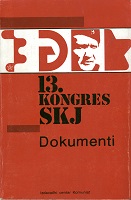
Ostvarivanje trajnih zajedničkih ciljeva i interesa društvenog i ekonomskog razvoja naše zemlje, svladavanje golemih teškoća u razvoju i izlazak iz ekonomske krize, daljnja izgradnja i jačanje socijalističkog samoupravljanja, dinamičan i skladniji društveno-ekonomski razvoj, brže uključivanje u međunarodnu podjelu rada, učvršćivanje ekonomskog jedinstva zemlje i stalno unapređivanje uvjeta života i rada radničke klase, radnih ljudi i građana zahtijevaju odgovarajuće promjene u sistemu društveno-ekonomskih i političkih odnosa i razvojnoj i ekonomskoj politici i djelovanju Saveza komunista i svih drugih subjektivnih samoupravnih socijalističkih snaga.
More...
Званична исправка; У Крагујевцу 23. Јануара; Крагујевац 27. Јануара; Како се подиже пољоделство; 1. Школе; 2. Угледна добра; ОДБОРСКИ ИЗВЕШТАЈ ПОДНЕТ РАДНОЈ СКУПШТИНИ; ДОПИСИ; Шабац 14. Јануара; Бела река срез Зајечарски окр. црноречки; ИЗВЕШТАЈ ФИНАНСИЈСКОГ ОДБОРА НАРОДНОЈ СКУПШТИНИ; Крагујевачка новост; Јавна коресподенција; Нек се зна; ОГЛАСИ; Удеоничарима крагујевачке друштвене штампарије; Наредба;
More...
ТЕЛЕГРАМ ''ЈАВНОСТИ''; Крагујевац 8. Фебруара; Рад ванредне народне скупштине; Штудкје о стању пољске привреде у Србији; Спољна политика немачка; ПИТАЊЕ; РАЗЛИЧНОСТИ; СТЕЧАЈ; ОГЛАСИ; Удеоничарима крагујевачке друштвене штампарије;
More...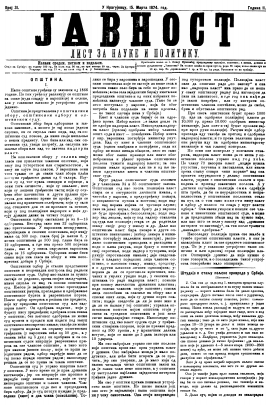
ОПШТИНА; Штудије о стању пољске привреде у Србији; Земљеделско-шумарска школа у Пожаревцу; ДОПИСИ; ОГЛАСИ; НАШИМ ЧИТАОЦИМА; На знање; Књижевни Оглас;
More...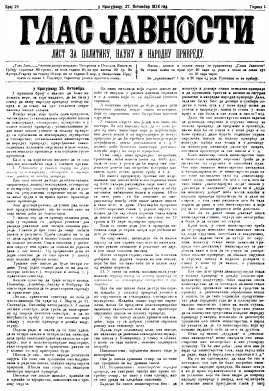
Нов швајцарски устав; Уредништву ''Гласа Јавкости''; ОПШТИНА; ИЗ НАРОДА; ИЗ СРЕЗА АЕПЕНИЧКОГ; Одзив на чланак у 18-ом бр. ''Гл.Јавности“, Каква нам је летина?; Политички преглед; КРАГУЈЕВАЧКЕ ВЕСТИ; НАЈНОВИЈЕ;
More...
НАШИМ ЧИТАОЦИМА; ОПШТИНА; Нов швајцарски устав; ЈАВНА ЛАЖ; ИЗ НАРОДА; Како стоимо с летином? Са Тимока; Политички прегдед; ОГЛАСИ; ОБЈАВА; ЧИТАЈ; ОБЈАВА; ОБЈАВА!;
More...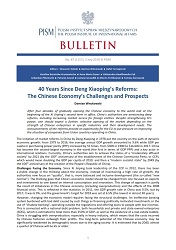
After four decades of gradually opening the Chinese economy to the world and at the beginning of the Xi Jinping’s second term in office, China’s authorities are announcing deep reforms, including increasing market access for foreign entities. Despite strengthening Xi’s power, one should expect a further, selective opening of the market depending on the strength of Chinese enterprises in specific industries and their development needs. The announcements of the reforms provide an opportunity for the EU to put pressure on improving the situation of companies from Union countries operating in China.
More...
Po czterech dekadach stopniowego otwierania chińskiej gospodarki na świat i na początku drugiej kadencji Xi Jinpinga władze ChRL ogłaszają pogłębione reformy, w tym zwiększanie dostępu do rynku dla zagranicznych podmiotów. Pomimo umocnienia władzy Xi należy się spodziewać dalszego wybiórczego wprowadzania zmian, uzależnionego od siły chińskich przedsiębiorstw w konkretnych branżach i ich potrzeb rozwojowych. Zapowiedzi reform stwarzają okazję dla UE do wywarcia presji na polepszenie sytuacji firm z państw unijnych działających w ChRL.
More...
Zašto? Uzmimo Jugoslaviju, poređenja radi. Kada se raspadala Jugoslavija verovalo se da će, bar sa ekonomske tačke gledišta, Srbija proći bolje od Slovenije. Jer, dokazivalo se, Slovenija više zavisi od srpskog tržišta nego Srbija od slovenačkog. Takođe, verovalo se da će manje razvijene republike i Kosovo proći najgore. Konačno, hrvatski su političari i ekonomisti dokazivali da će se Hrvatska fiskalno rasteretiti jer se neće prelivati dohodak, kako se govorilo, od razvijenih u nerazvijena područja. Ništa od toga nije bilo tačno.
More...
Bila mi je pružena prilika da, uz komentarisanje filma “Licem u lice” Branka Bauera, za Obrazovni program RTS2 kažem šta mislim o samoupravljanju. Blagonaklonost voditeljke ipak nije mogla da otkloni uobičajenu stisku s vremenom uz samoskraćivanje izlaganja. Stekao sam utisak da tema zaslužuje obradu u pismenoj, konzistentnijoj formi.
More...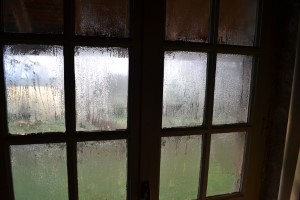
Vesti koje su najavile početak 2016. i koje su nas kao iz zasede zaskočile posle novogodišnjih praznika, za ekonomiju Rusije nisu nimalo ohrabrujuće. Svetske cene energenata, naših osnovnih izvoznih proizvoda, strmoglavo nastavljaju da padaju, a da se kraj tog procesa i dalje ne nazire. Berzanskim izveštajima o neverovatnoj ceni nafte koja se, evo, već spustila na samo 30 dolara za barel, poslednji događaji na tržištu gasa ne dodaju nimalo optimizma.
More...
Još je prerano za procene kako će se pandemija korona virusa dugoročno razvijati. Ali već je jasno da nas iza ugla možda čeka nova globalna recesija koja će se značajno razlikovati od onih iz 2001. i 2008. Prvo, nova recesija će verovatno doći iz Kine i moguće je da je već počela. Kineska privreda je visoko zadužena i ne može priuštiti sebi dužu pauzu u ekonomskim aktivnostima, kao što to nije mogao ni Japan u periodu brzog rasta 80-ih godina prošlog veka.
More...
Ove nedelje obeleženo je 66 godina od početka proizvodnje legendarnog fiće, zvaničnog naziva Fiat 600, koja je u pogonu Stara prikolica nekadašnjeg Vojnotehničkog zavoda u Kragujevcu (nakon 2. svetskog rata preimenovanog u Zavode Crvena zastava) startovala 18. oktobra daleke 1955. Prethodno je, 1954. kupljena licenca od Fijata, čemu je 1953. prethodilo izjašnjavanje radnika kragujevačkih Zavoda o početku proizvodnje putničkih vozila u Kragujevcu.
More...
Prikaz knjige E.P. Thompsona „Pruga. Avantura izgradnje“ iz 1948, u prevodu Slobodanke Glišić, koja sadrži svedočenja članova britanske radne brigade koja je gradila prugu Šamac-Sarajevo. Tekst je objavljen u zborniku radova o ovoj knjizi, pod naslovom „Duh pruge“. Knjigu i zbornik je u jednim koricama 2020. objavila Fabrika knjiga.
More...